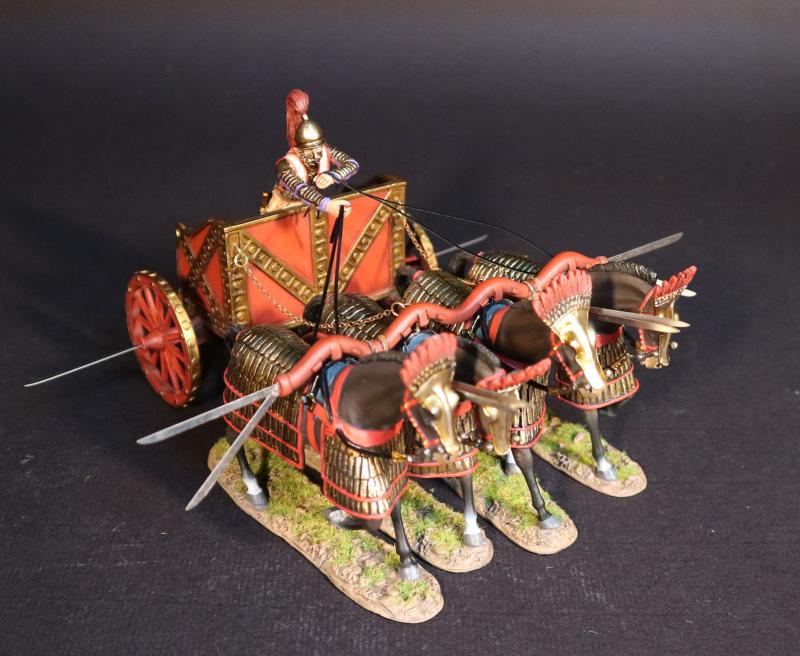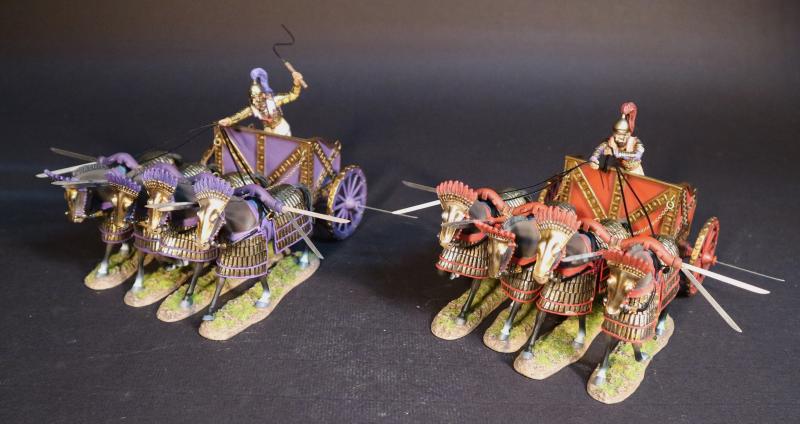Persian Scythed Chariot (RED), The Achaemenid Persian Empire, Armies and Enemies of Ancient Greece and Macedonia
$358.00
Item Number: AP-100A
Persian Scythed Chariot, The Achaemenid Persian Empire (RED), Armies and Enemies of Ancient Greece and Macedonia
The Achaemenid Persian Empire, 550-330
The Achaemenid Empire (c. 550–330 BCE), also called the First Persian Empire, was an ancient Iranian empire based in Western Asia founded by Cyrus the Great. Ranging at its greatest extent from the Balkans in the west to the Indus Valley in the east, it was larger than any previous empire in history, spanning 5.5 (or 8) million square kilometers. Incorporating various peoples of different origins and faiths, it is notable for its successful model of a centralised, bureaucratic administration (through satraps under the King of Kings), for building infrastructure such as road systems and a postal system, the use of an official language across its territories, and the development of civil services and a large professional army. The empire's successes inspired similar systems in later empires
Achaemenid military units were organized decimally, in tens, hundreds and thousands. This was a simple form of military organization and one quite popular among early armies. The basic unit of Persian infantry is believed to be of ten men. The first man is a shield-bearer (Spara) with a short spear, and would rest his large whicker shield on the ground to protect the rows of archers behind him.
The 4 horse scythed chariots were used by the later Achaemenid Persians.
Scythed chariots were drawn by four armoured horses and manned by a single armoured driver. It was important for the vehicle to build up speed, as they were vulnerable to swift pre-emptive attacks by light troops.
Once the chariot was galloping towards its target, the driver would often bail out for his own safety, which unfortunately made it likely that the horses would miss or shy away from the target.
If they did make contact, the chariots would cause immense damage but would more or less destroy themselves in the collision.
Generally formed infantry bodies could stand firm after such contact, unless the chariots were closely supported, which they all too often were not.
Cavalry might have been easier to break than solid infantry bodies, but were not used, perhaps because the cavalry could easily have avoided their charge.
Xenophon’s “Kyropaidia” provides us with the best description of these items.
It is described as having heavy wheels with studded rims, a broad wheelbase for stability, and two poles.
Some decriptions refer to a closed back with a rear door, but others with an open back, but a simple bench seat to one side.
Diodoros describes the chariots at Gaugamela with 27 inch blades at the ends of the yokes, and blades on the axle ends.
Xenophon describes Persian charioteers, as wearing a cuirass, armpieces and helmet, with only the eyes showing. It is believed that no armour was worn below the waist as this was protected by the body of the chariot. The helmet is believed to have cheek pieces which would reflect a Greek influence.
Released in SEPTEMBER 2024.

